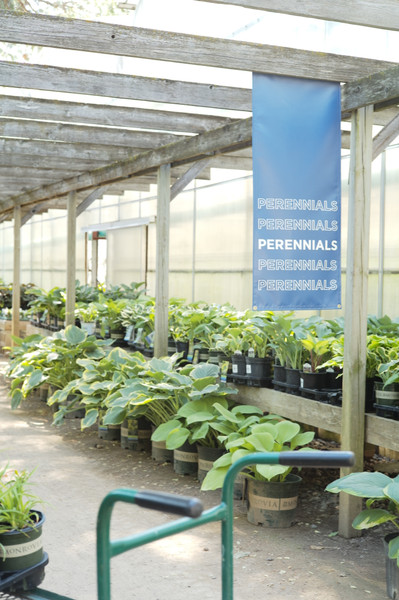Perennial Garden Resources
Posted by Jessie Jacobson on May 26th 2022
Perennial Garden Resources
In the blog this week, we want to introduce you to all the Perennial Garden Resources available at Tonkadale. Our team strives to be your go to resource for planning, planting, and maintaining the best perennial garden ever.
Now on the Podcast: Episode 9 - Perennial Garden Planning and Resources
Jessie and Aaron (who has since taken a position with a native plant installation company) discuss garden plans for specific spaces - pollinator gardens, full-sun, part-shade, and shade.
Topic discussed:
- An overview of our perennial department and how we source plants.
- Considerations when planning and planting a perennial garden - soil, light, etc.
- Trends in perennial gardening
- Perennial specific learning resources
- Garden plans
- Native Plant Selections
- New perennials for 2023
Perennial Garden Plans
The perennial team at Tonkadale has created 4 garden plans for you to work with in either a new perennial bed or to incorporate into existing perennial beds. But first a a guide to planting perennials in the garden:
Before planting, make sure your plants are evenly moist. For best results, plan to work in your garden in the morning or evening, outside of the hottest hours of the day. Gently press on the sides of the container to pull the plant and root ball out. Dig a hole twice as wide and as deep as the root ball making sure the top of the root ball is even with the ground when planted. Space your holes leaving room for the mature size of the plant and those around it, checking care tags to verify spacing. Place the plant in the hole and back fill with two parts native soil, one part compost or planting mix. Add starter fertilizer such as Espoma’s Organic Biotone. Lightly tamp the soil, and water in well. Water all plants thoroughly for the first season to establish strong, healthy growth. Plants will generally grow and mature noticeably in size over the first three years after planting.
Check out our perennial garden plans for full sun, shade, part sun, and pollinators here!
Download Garden Plans Here
Planting for Continuous Color
Along with their beautiful foliage interest, textured bark, and ornamental berries, perennials produce stunning blooming displays with fantastic color year after year. Keep bloom timing and bloom progression in mind when designing your space, incorporating Early, Mid, and Late season bloomers in the garden to keep things colorful throughout the year!
Shrub Spotlight
Adding shrubs into your landscape design is an excellent way to provide structure, frame buildings, anchor designs, and create year-round interest in your space. Check out some of these beautiful selections to find the perfect shrub for your garden.
Planting Tips for Healthy Trees and Shrubs
A worthwhile investment, trees and shrubs require some special care and attention as they establish themselves. A little extra love upfront will ensure a happy, healthy, and carefree plant for many years to come!
Learn about planting trees and shrubs here!
Minnesota Native Perennials
Native plants are species of plants that occur naturally in specific ecosystems and locations. Plants are considered native to Minnesota if they were observed in Minnesota at the time of the Public Land Survey (1847-1907), conducted before and in the early stages of settlement and disturbance.
A native plant community describes plant species that naturally occur together in a specific area. Each area has a unique set of conditions that include soil, moisture, sun, and climate. A native plant community has dozens of plants that all thrive under those same conditions. Minnesota has many native plant communities including dry prairies, wet prairies, oak forests, pine forests, and marshes.
Native plants are an excellent choice for the home garden as they are best adapted to our local climate and growing conditions. Additionally, native plants are great sources of pollen, nectar, and seeds for native pollinators, birds, and other animals, and provide great habitat for wildlife.
Planting a garden with native plants can be a little intimidating as they have a reputation for being vigorous growers that can become unruly if left unmanaged in landscapes. Definitely a divergence from neatly manicured lawns and properly mulched Hostas. However, when planted with intention, native landscapes also known as wild landscapes are super on trend for more reasons than one!
Deer and Rabbit resistant Perennials and Shrubs
Interested wildlife can be kept away from perennials with harmless repellent options that use scent and taste as a deterrent. Options include foliar sprays like Hot Pepper Wax, Liquid Fence, or Repels All, granular options like Shake Away Coyote or Fox Urine, and systemic options like Repellex, available in both tablet and granular formulations. Fencing and other physical barriers are also a foolproof way to keep critters out of the garden. Note that animal resistant does not always mean animal proof.
View our full list or deer and rabbit resistant perennials here!
Make sure to check out this blog for tip on keeping our furry friends away from the garden!
10 Tips for Pollinator Planting
Pollination is a vital ecological process that involves the transfer of pollen between flowers. Pollinators are insects or animals that aid in pollen transfer, including bees, butterflies, hummingbirds, moths, ants, beetles, flies, wasps, and bats. A garden that is beneficial to pollinators in all life stages of life helps to sustain populations and provides numerous benefits to both humans and the natural environment around us.
Perennial of the Week
Our perennial of the week page is dedicated to mini blogs focusing on specific perennials. To date, we have published over 60 perennial plant specific blogs covering plants from Achillea to Yucca.

